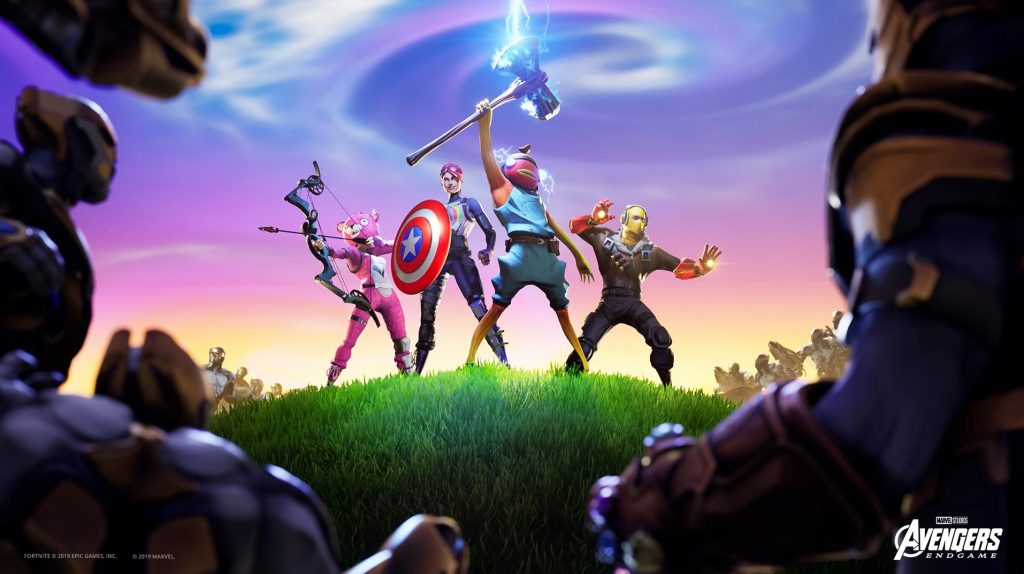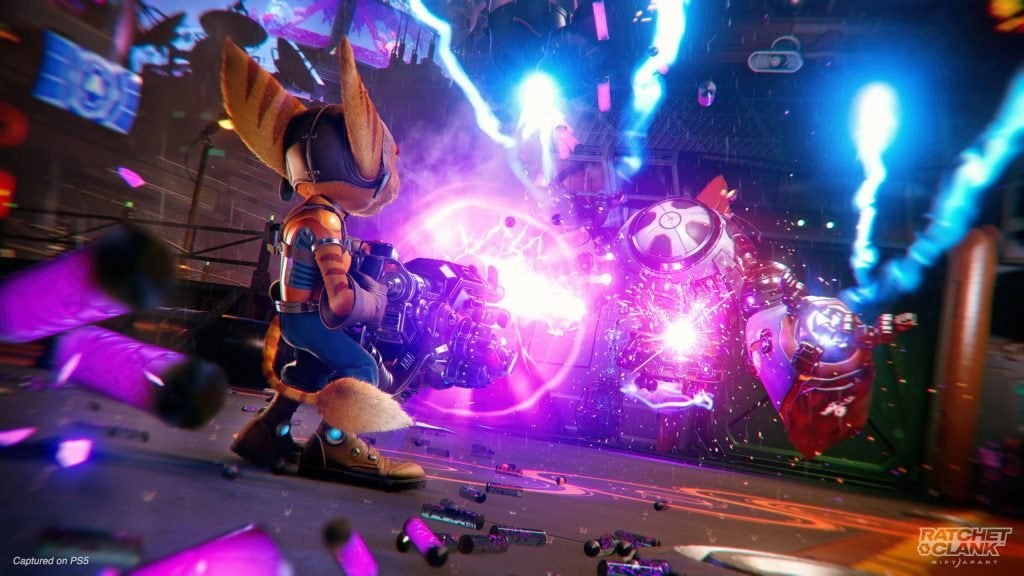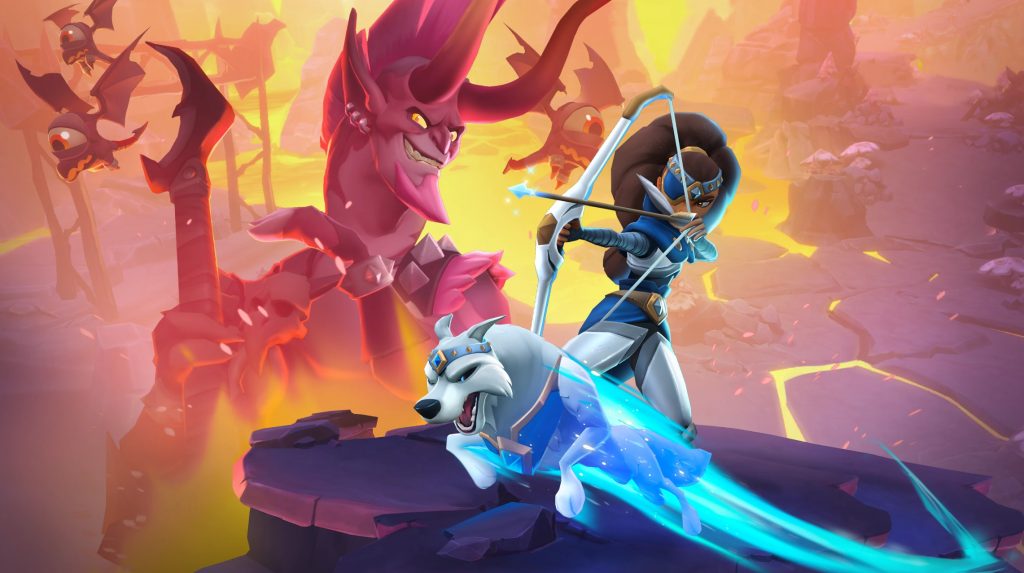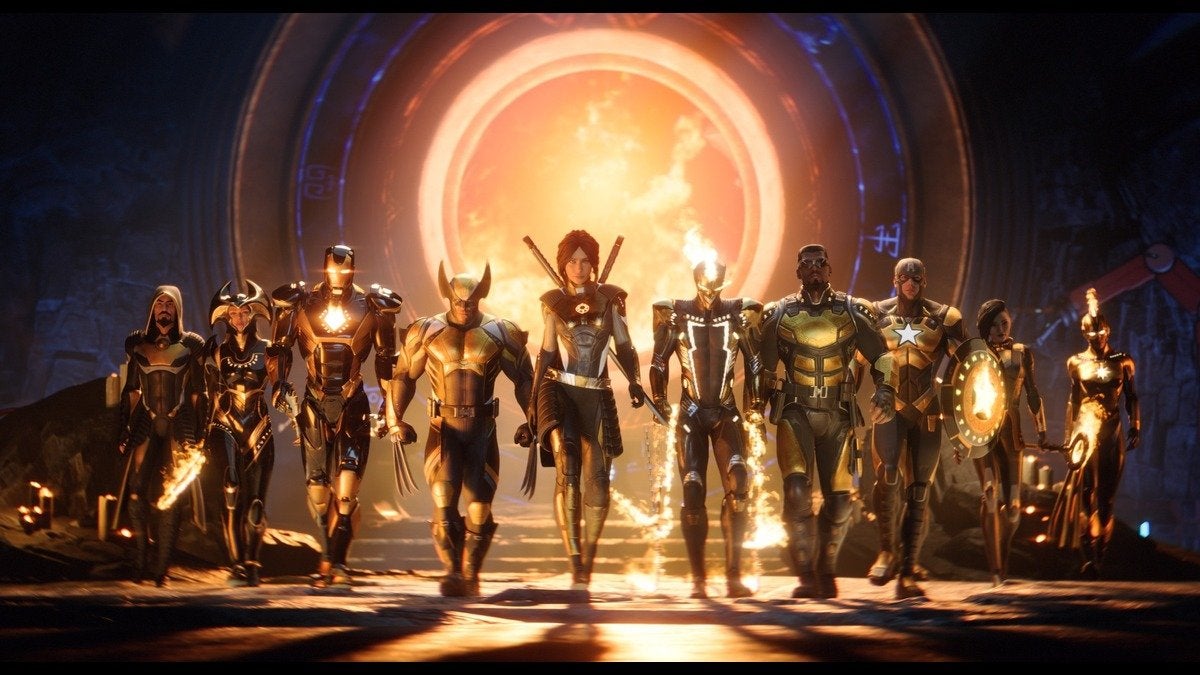If you’re a living, breathing human living in the Western world, you’ve likely been inducted into the colossal fandom of the Marvel universe. If your love of comics crosses over into gaming, you’ve undoubtedly encountered the impressive works of audio designer Gary Miranda.
As the Audio Director of Injected Senses Audio in San Diego, Miranda most recently led the audio design and development for the tactical RPG Marvel’s Midnight Suns. He also oversaw the sound design for the PlayStation 5 launch title Spider-Man: Miles Morales, a fan and critic favorite for 2020.
The global battle royale phenomenon Fortnite has also welcomed Miranda’s expertise over its many successful years, as he has been a frequent collaborator on the game’s numerous Marvel collaborations. Outside of the comic-sphere, Miranda also supervised the sound design for the recent smash-hit Ratchet & Clank: Rift Apart and Sunblink’s HEROish tower defense title. Notably, Rift Apart claimed four awards at the DICE Awards in 2022, including Family Game of the Year and Outstanding Technical Achievement.
A Sound Start

It came as no surprise when Miranda admitted to being a lifelong fan of gaming and comics. “My first console was an NES. I’m probably a little too proud that I sunk way too many hours into that and the SNES. I started picking up comics around the same time,” he said. “Thinking back, they really felt like they were separate hobbies at the time. But now being able to work on Marvel games–like Midnight Suns— I’m able to merge my love for both of those. If I could tell my younger self, “Someday, you’ll be working on games with these characters and these stories,” there’s no way I would have believed it.”
Breaking into the gaming industry is no easy task, and taking the time to craft your skills is crucial before making the leap. Having a passion for one singular aspect of the creation process is a great help, and Miranda has been painstakingly crafting his skills over two decades, leading him to his current successes. During his early years, he focused mainly on music–something many would instantly leap to when the subject of audio is broached.
“I’ve been working with audio since the early 2000s. I started out recording my own music along with friends’ bands,” he told me. “Around 2008, I partnered with a recording studio in San Diego, Studio West. During my time there, I was able to work on various short films, commercials, ADR and dialogue sessions, and game trailers. That’s where I really found my love for working on audio outside of music and I moved over to video games shortly after.”
A New Stage of the Game
Modern games are held to a high standard when it comes to sound design. Critics and fans alike consistently take time to point out each high point and flaw with each aspect of audio. Footsteps need to sound authentic, waves need to crash at the appropriate level, and voices can’t be drowned out by the often orchestral score. Long gone are the days of Pong and Pac-Man, filled only with primitive brain-melting and often hypnotic beeps and boops.
As it turned out, the intricacies of game audio proved to be the perfect challenge for Miranda. “After working in-house for a while, I decided to go back to freelance but focusing on game audio specifically,” he said. “As my workload increased, I brought on others who fit my style and ideals for providing audio to the various needs of developers. Whether that’s just basic over-the-fence sound design or technical implementation of audio, all the way up to audio direction for titles. Our team also provides sound design and mixing for linear setups in-game, like cinematics and other cut scenes.”
Injected Senses was initially used as a business name for Miranda’s freelance work. Today, it is a fully-fledged company specializing in audio for games and other interactive media.

“We’ve been very fortunate to work on a variety of games that include a variety of genres, styles, and IPs,” Miranda said. “My dream project is to maintain the growth of this company and continue working in the audio realm for as long as I can. We have a great team put together and to have continued success is really all that I can ask for.”
Trust the Process
From the outside, it can be difficult to visualize the countless moving pieces that come together to form a title’s audio profile. Music is more straightforward–it should be soft and spooky when players are traversing a haunted crypt, or loud and triumphant when the good guy is beating the snot out of the villain. But what sounds should players hear in the far distance when exploring a fantasy world? What noise should a magical artifact make when touched? How does a laser gun sound when fired at close range?
Without a designated audio design team, each and every game would be stuck using the same stock sound effects. While graphics and gameplay often steal the spotlight in game reviews, sound is paramount for bringing a sense of realism and immersion. When dialogue is choppy or certain sounds fail to play, players are reminded of how vital it is to hear the game world.
Miranda confessed his love of custom creativity during our chat, calling it the part of the process he most enjoys.
“If there’s any chance I can record my own sounds or have the extra time to fire up a synth and dial in some unique interface sounds, I get hyper-focused. I feel the most inspired during those situations,” he said. “I also really enjoy technical implementation when it comes to audio and games. There’s such a creative puzzle aspect when we are trying to create a system from scratch, whether it’s vehicle engines, material-based footsteps, or even interactive music systems. Every project being unique means new puzzles to solve.”
When asked about the project that gave Miranda and his team the most trouble, he was quick to explain that ‘trouble’ isn’t a word he prefers to use. “Every project has its set of challenges, whether it’s time, scope, resources, or technical hurdles. Any one of these challenges is just a learning opportunity for me and the team.”

Unlike creating sound for film or television, audio designers have to anticipate what actions players will make and prepare accordingly by creating several layers of sound.
At the Game Audio Network Guild Awards held in March 2023, the team earned nominations for Best Audio for an Indie Game and Best Sound Design for an Indie Game for Sunblink’s HEROish. Initially released on Apple Arcade, the title has since made its way to console and PC.
“HEROish is such a great game and Sunblink is truly an amazing development team,” Miranda said. “Our Supervising Sound Designer, Mark MacBride, and Sound Designer Adam Sanchez handled almost every aspect of the game’s audio. It was great to have some recognition for the hard work and dedication they put into that. It was an honor, really.”
Accolades aside, Miranda wasn’t keen to choose his favorite past project. “Asking me to pick which child is my favorite is very unfair,” he laughed. “When I look back, I really focus on specific moments of different projects. Recording the dialogue for Star Wars: The Old Republic, recording the gun sounds for H1Z1 and Rogue Company, launching Midnight Suns after over two years of work…all of these moments hold a special place in my heart.”
The Not-So-Distant Future
The company is currently working on the upcoming DLC for Midnight Suns. Injected Audio has a few secret projects in the pipeline, though Miranda couldn’t tell me any details quite yet. “Some might be comic-related,” he teased.
With business booming in the gaming universe, those hoping to pursue a job in the video game audio industry will need to be prepared. Inspired by Miranda’s path, I asked him for one piece of advice to share with hopeful creators aiming to become a part of the next generation of audio connoisseurs.
“Talk to and engage with people in the industry,” he said. “Never underestimate networking and making those connections. Don’t be afraid to reach out and seek mentorship from those already in the industry and willing to help.”


